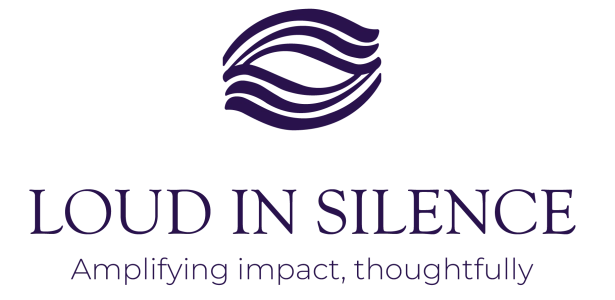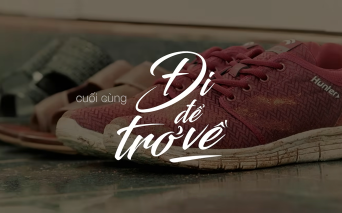
Not every brand fails because they do things wrong - sometimes, they fail because they ask the wrong questions.
A "Mismatched" Interview
Several weeks ago, I had an interview with a CEO who was highly experienced in his field. After a quick introduction, he asked: "What do you know about our company? Do you have any ideas for our product?"
I started sharing insights about their product, competitors, and potential customers. But before I could present my strategic approach, he interrupted:
"That sounds too shallow for a marketer with your experience. Why should I hire you - someone with little experience in this market and no solid SaaS background?"
I tried explaining my approach, emphasizing core marketing and communication principles - understanding customer behavior, identifying needs, and mastering the product itself. This was how I successfully transitioned across various industries.
"Still too vague. I don’t see how you can help my SaaS company. Why don’t you share your past SaaS experience?"
Despite my attempts to clarify his expectations, the conversation kept shifting. Eventually, we both agreed: "We are not the right fit." But it left me wondering: What if he had asked, "If you were to work at my SaaS company, how would you approach marketing for our product?" and then actually listened? Would our conversation have taken a different turn?
Jaguar’s Re-Branding Controversy
At the end of 2024, Jaguar transformed from its classic luxury identity in favor of a modern, youth-focused image. On paper, this seemed like a bold move. But in reality? Longtime customers felt Jaguar had lost its essence. The once-distinctive elegance was diluted into something generic, failing to stand out.
The result? Sales dropped 8.9% within 7 days after their "Copy Nothing" rebranding launched on November 19. (Marketcheck UK). They lost their loyal customers but failed to attract new ones. A brand that once had a strong identity was now just another name in the luxury market.
Did Jaguar ask the wrong question? Instead of asking, "What truly sets Jaguar apart?" they seemed to ask, "How can we look more modern?" And when a brand doesn’t root its story in its core values, it risks alienating both its existing and potential customers.
So, What’s the Lesson Here?
I should improve my responses and storytelling, indeed.
But the real issue here is that asking the right questions is critical in shaping the right strategies. Whether in life, marketing, or branding, a well-formed question doesn’t just bring better answers - it reveals deeper insights and stronger solutions.
Stop Telling - Start Asking the Right Questions
For a brand to thrive, it must address real customer needs. Customers don’t buy products - they buy solutions to their problems, something that helps them work better, feel safer, or operate more efficiently.
So, telling a great brand story isn’t enough. You need to tell the story your customers want to hear. Instead of asking, "What should we say now?" ask, "What do our customers need to hear?" When a brand reflects customer desires, values, and needs, it doesn’t just sell - it builds lasting connections.
Why Did ‘Just Do It’ Work?
In 1988, Nike launched "Just Do It." More than a tagline, it became a movement. But how did they craft such a powerful narrative?
Before launching the campaign, Nike didn’t just ask about their products - they asked: "What truly drives our customers to buy sportswear?" They realized people weren’t just looking for sneakers; they were seeking the motivation to push their limits. And so, "Just Do It" was born - a simple yet compelling call to action that resonated globally.
The result? Nike didn’t just boost sales; they built an iconic brand that still dominates the market today.
The Three Most Important Questions for Brand Storytelling
1. "What Do Customers Really Care About?"
Many brands make the mistake of telling only their story, forgetting that customers only care about themselves. Focusing too much on showing off and glorifying the brand - while ignoring customer needs and behaviors - is the downfall of even the most seasoned marketers and brand strategists!
I learned this lesson the hard way when I first handled marketing for An Biên Eatery. I got caught up in the brand narrative from the guideline, clinging to the idea of an Innovative Hai Phong Street food and crafting stories about how “innovative” it was - through its dishes, visuals, and even the overly polished language in our messaging. The result? After a month of execution, revenue remained stagnant.

That’s when the director pulled the marketing team aside and hit us with a reality check. At its core, the restaurant serves Hải Phòng cuisine. But is “innovative” really what our customers care about?
We took a step back and asked ourselves: “What do our customers truly want?” Then, we shifted our focus - highlighting the most mouthwatering visuals, stripping away unnecessary design elements that distracted from the food, and using more down-to-earth, relatable language in our social media and digital ads.
The result? Revenue increased by 5-10% in just 1 month.
2. "What Makes This Brand Different?"
Being different isn’t about being louder than your competitors - it’s about saying something only you can say. A strong brand doesn’t have to do everything; it just needs to do one thing exceptionally well. So, what sets you apart? Quality? Experience? If even you aren’t sure, how can you convince your customers?
Instead of trying to stand out with noise and gimmicks, find what truly makes you memorable. A brand can't be everything, but it can be the one color that stays in customers' minds.
Apple doesn’t just sell computers. What do they really sell? A statement? A lifestyle?
Remember Apple’s Think Different campaign? They didn’t focus on product specs. Instead, they inspired creativity and innovation. I believe the question “What do people truly need beyond just a computer?” guided this campaign.
Before launching Think Different, Apple was running over 25 fragmented ad campaigns - each focusing on different products and specifications, each office pushing its own messaging. Despite enormous marketing efforts and budgets, Apple was on the brink of collapse (September 1997). To the public and the media, it was just another struggling tech company, failing to compete with the mass adoption of affordable Windows PCs.
With revenue plummeting, Steve Jobs returned as CEO and took direct control of Apple’s brand revival. Partnering with Lee Clow, the Creative Director of Chiat/Day, Jobs made a bold move: Instead of a conventional product campaign, they launched a pure branding message. The campaign featured a simple black-and-white montage of world-changing figures - Albert Einstein, John Lennon, Bob Dylan, Muhammad Ali, Martin Luther King Jr., Martha Graham - all tied together by a single, striking image: the Apple logo in rainbow colors, accompanied by just two words: Think Different.
And that was exactly the answer Apple needed.
"Think Different honors the soul of Apple - people who are passionate about changing the world for the better." - Steve Jobs, Wall Street Journal, 1998.
This was Apple’s core value. It wasn’t about gigahertz or RAM. It was about vision - and that’s what made people choose Apple.
The result? Think Different not only pulled Apple out of crisis but laid the foundation for its legendary rise.
3. “Làm thế nào để khách hàng cảm thấy mình là một phần của câu chuyện?”
Nobody wants to feel like an outsider. The feeling of “belonging,” of being “understood” or “empathized with,” is crucial if you want to connect with anyone. Naturally, a strong brand that aims to resonate with its customers shouldn’t just talk about itself - it should make customers see themselves in the brand’s story.
Are your customers recognizing their own problems? Do they feel the solution? Can they envision themselves becoming better because of your brand?
Instead of saying, “Here’s what we do,” tell them, “Here’s what it means for you.” When customers see themselves in the story, they don’t just listen - they engage. And that’s how a brand truly lives in the minds of its audience.

Take, for example, Dove’s Real Beauty campaign - one of the most impactful marketing campaigns in the beauty industry.
Dove discovered that only 2% of women genuinely felt satisfied with their appearance (based on research conducted with Edelman in 2004). This led to critical questions: "Why don’t women feel beautiful?" "How can Dove help women feel more confident and beautiful every day?"
Rather than advertising products, they launched a series of campaigns - from interactive OOH (out-of-home) ads to short films like Daughters, Evolution, and Onslaught (released between 2006 and 2007), and the viral 2013 clip Real Beauty Sketches.
The core message? Helping women appreciate themselves, recognize their own beauty, and see the positives in their appearance.
This campaign transformed perceptions of beauty, created a global impact, and fostered deep customer loyalty. Between 2006 and 2010, it led to a revenue surge, growing from $2 billion to $4 billion within three years. By 2010, Dove’s revenue had increased by 10% compared to 2009.
The Right Questions Build the Right Brands
You can spend billions on advertising, but if your brand story doesn’t align with what customers need, it’s just noise.
Albert Einstein once said: "It’s not that I’m so smart, it’s just that I stay with questions longer." The best questions don’t just lead to better answers - they open up entirely new perspectives.
A wrong question leads a brand astray. But a right question? It can unlock a whole new strategy, a whole new market.
*Is your brand asking the right questions - or just telling a story no one wants to hear? If you’re unsure, start with this: What truly makes customers choose you?
I’m here to listen. Let’s find the right questions together.*




